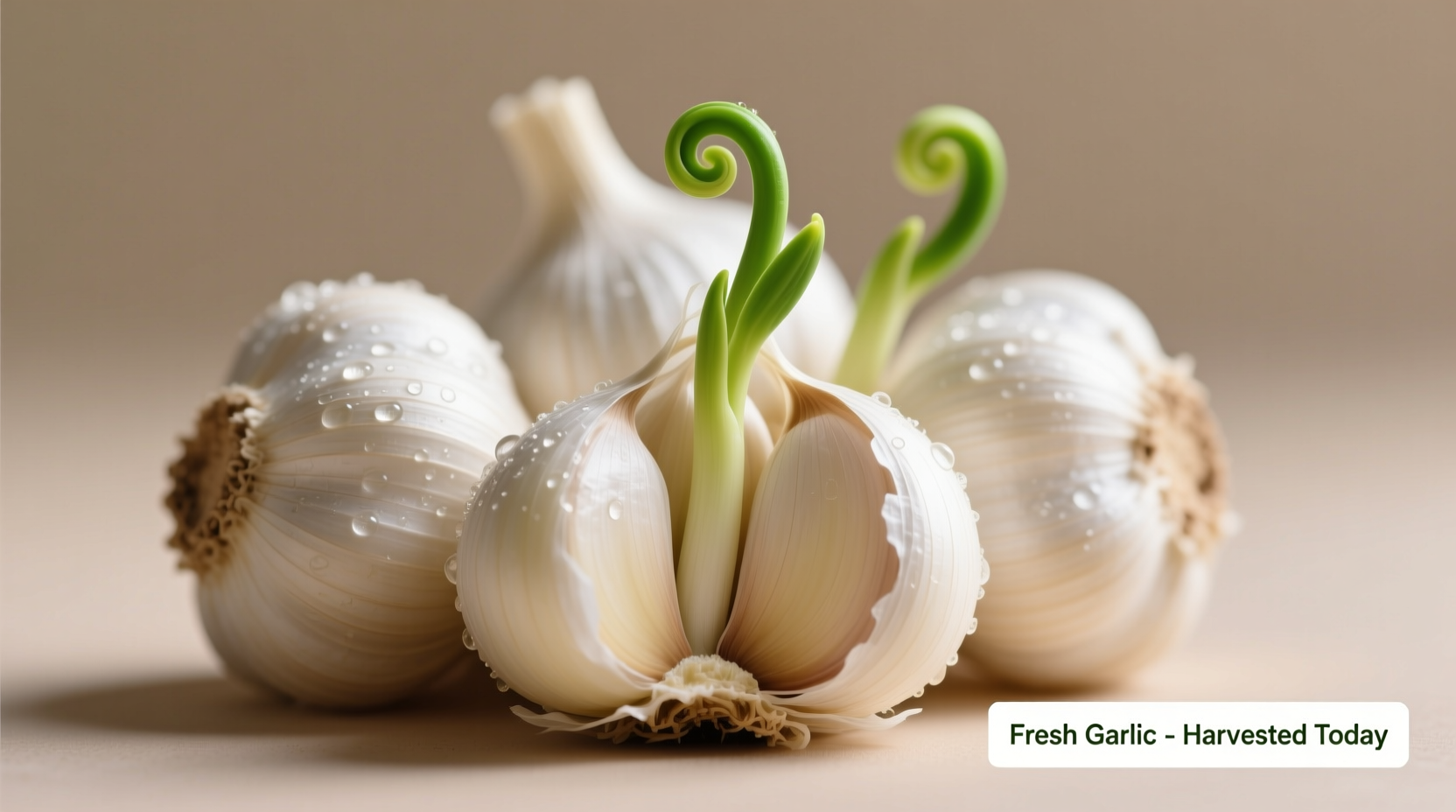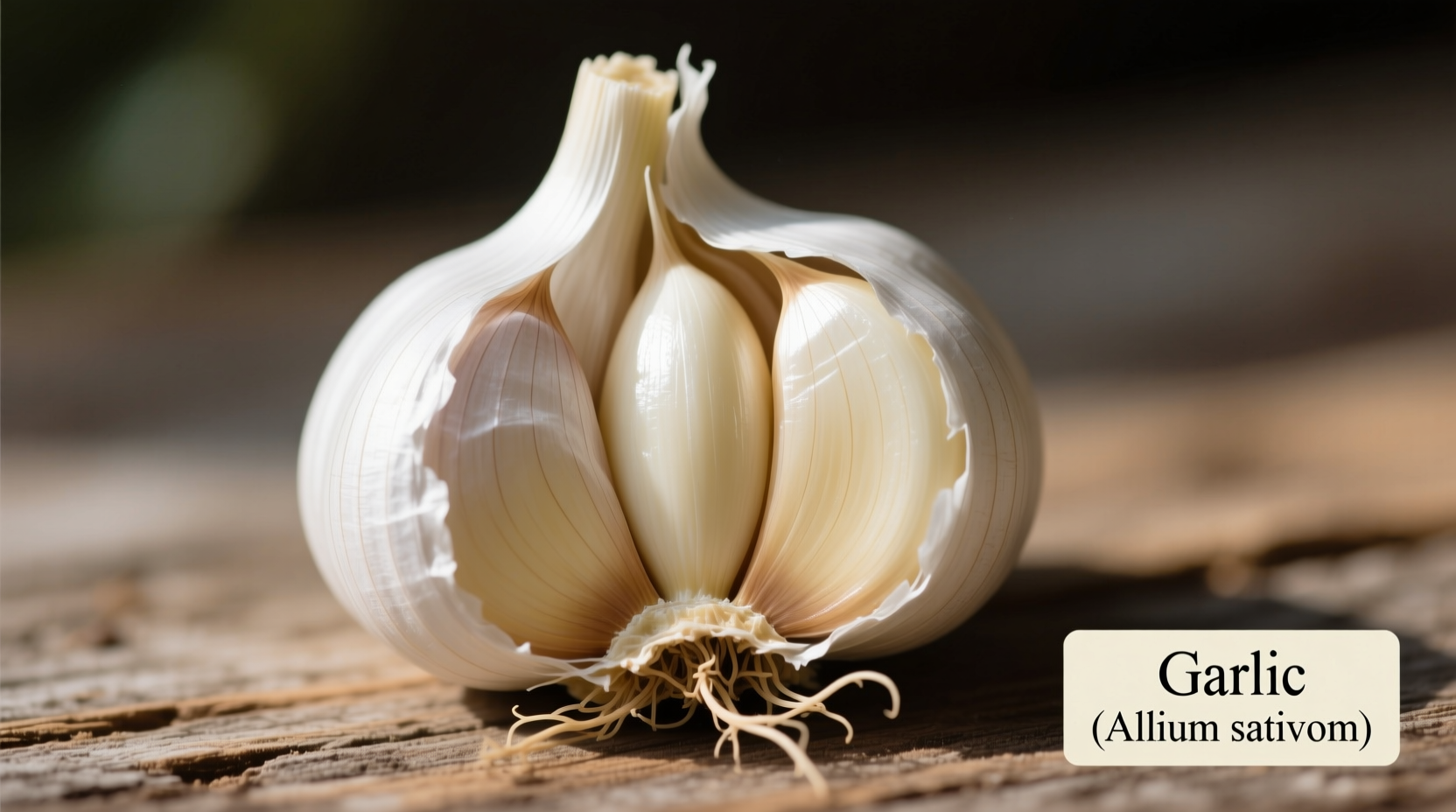When you ask what is a garlic, you're exploring one of humanity's oldest cultivated plants with remarkable versatility. Understanding garlic's botanical identity, historical significance, and practical applications transforms how you use this kitchen essential. Whether you're a home cook seeking flavor mastery or simply curious about this aromatic bulb, knowing what garlic truly is will elevate your culinary experiences and appreciation for this ancient ingredient.
Botanical Identity: What Exactly Is Garlic?
Garlic belongs to the Allium genus, making it a close relative of onions, leeks, and shallots. Scientifically classified as Allium sativum, this hardy perennial plant grows from individual cloves arranged in a bulb surrounded by papery skin. Each bulb typically contains 10-20 cloves, though some varieties produce more.
The plant features long, flat leaves and produces a flower stalk (called a scape) that develops into an umbel of small white or pink flowers. While garlic can reproduce through seeds, commercial cultivation primarily uses cloves for propagation due to reliability and consistency.
| Garlic Type | Characteristics | Common Uses |
|---|---|---|
| Softneck (Allium sativum var. sativum) | Multiple clove layers, flexible stalks, longer shelf life | Commercial production, braiding, Mediterranean cuisines |
| Hardneck (Allium sativum var. ophioscorodon) | Fewer larger cloves, rigid central stalk, complex flavor | Gourmet cooking, cold climate cultivation, roasting |
| Solo/Single Clove (Allium ampeloprasum) | Single large clove per bulb, intense flavor | Ease of preparation, specialty dishes, medicinal uses |
Historical Journey: From Ancient Remedy to Kitchen Staple
Garlic's story spans millennia, with archaeological evidence confirming its use in Bronze Age settlements. Ancient Egyptians revered garlic so highly that workers building the pyramids received daily rations of it for strength and endurance. Medical texts from ancient Mesopotamia (c. 2600 BCE) documented garlic's therapeutic applications, while Hippocrates prescribed it for respiratory issues and fatigue.
5,000+ years ago: First cultivation in Central Asia
3,700 years ago: Mentioned in ancient Egyptian medical texts
2,000 years ago: Used by Roman soldiers for strength and medicinal purposes
1,000 years ago: Spread throughout Europe via trade routes
16th century: Introduced to the Americas by Spanish explorers
Present day: Global production exceeding 28 million metric tons annually (FAO, 2023)
Culinary Science: How Garlic Transforms Your Cooking
Understanding what is garlic from a culinary perspective reveals why it's indispensable in kitchens worldwide. Raw garlic delivers a sharp, pungent flavor due to allicin, a compound formed when cells are damaged. Cooking transforms this chemistry—gentle heating creates milder, sweeter notes while high heat produces rich, nutty caramelization.
Professional chefs leverage different preparation methods to achieve specific flavor profiles:
- Raw: Maximum pungency for dressings and sauces
- Minced finely: Quick flavor release for sautés
- Sliced: Moderate flavor infusion for stir-fries
- Whole roasted: Sweet, mellow flavor for Mediterranean dishes
- Black fermented: Complex umami notes for gourmet applications

Nutritional Profile and Evidence-Based Benefits
Nutritionally, garlic packs impressive value in small packages. According to USDA FoodData Central, a single raw garlic clove (3g) contains:
- 9 calories
- 0.2g protein
- 2.1g carbohydrates
- 0.1g fiber
- Significant manganese, vitamin B6, and selenium
Research published in the Journal of Nutrition confirms garlic's cardiovascular benefits, while studies in Antimicrobial Agents and Chemotherapy document its antimicrobial properties. The World Health Organization recognizes garlic's traditional medicinal uses, noting its potential role in supporting immune function when consumed as part of a balanced diet.
Practical Growing and Storage Guidance
For those interested in cultivating their own, garlic thrives in well-drained soil with full sun exposure. Plant individual cloves pointy-end up, 2 inches deep and 6 inches apart, in autumn for spring harvest. Properly cured garlic stores for 6-8 months in a cool, dry place with good air circulation.
When selecting garlic at the market, choose firm bulbs without soft spots or green sprouts. Avoid refrigeration, which promotes mold growth—instead store in a mesh bag or open container at room temperature. For extended preservation, try pickling cloves in vinegar or freezing them in oil for cooking applications.
Common Questions About Garlic
Understanding what is garlic naturally leads to practical questions about its use and properties. Here are answers to the most frequently asked questions:











 浙公网安备
33010002000092号
浙公网安备
33010002000092号 浙B2-20120091-4
浙B2-20120091-4